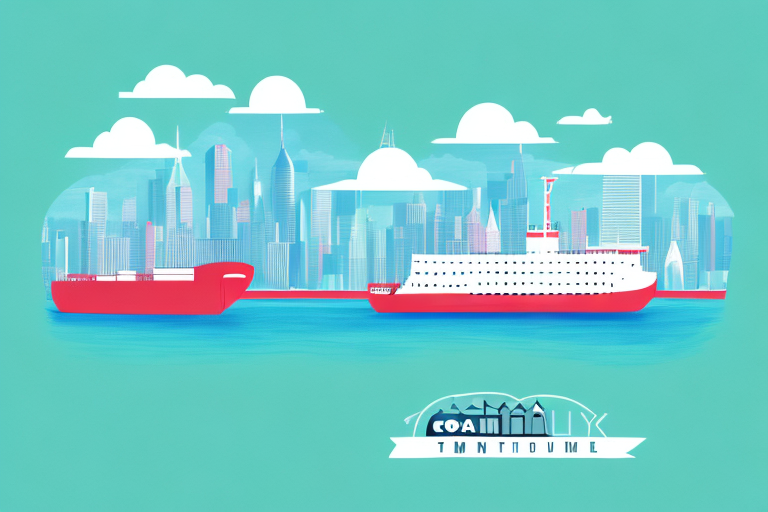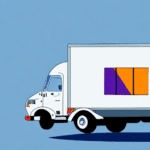Optimizing Your Supply Chain with Full Truckload Shipping
If you're looking to streamline your supply chain and increase efficiency, full truckload (FTL) shipping may be just the solution you need. FTL shipping involves using an entire truck to transport your goods from one location to another, rather than sharing space with other shippers as in less-than-truckload (LTL) shipping. In this article, we'll explore the benefits and considerations of using FTL shipping, as well as some best practices for optimizing your shipments.
What is Full Truckload Shipping?
Full truckload (FTL) shipping entails dedicating an entire truck to transport your goods. Typically, FTL shipments require a certain amount of cubic feet or weight to be considered full, although specific criteria may vary by carrier. Depending on the carrier and your shipment's destination, FTL shipping can involve various types of equipment, including dry vans, refrigerated trailers, flatbeds, and more. In general, FTL shipping is the ideal option for shipments that require intact delivery, adhere to specific delivery schedules, or have a high value-to-volume ratio.
One of the main advantages of FTL shipping is the enhanced security for your goods. Since your shipment is the only one on the truck, there is less risk of damage or theft compared to less-than-truckload (LTL) shipping, where your goods are combined with other shipments. Additionally, FTL shipping can be more cost-effective for larger shipments, as the cost per unit decreases with increased volume. According to the American Trucking Associations, FTL shipments account for approximately 45% of all trucking revenue, highlighting their significance in the logistics industry.
However, FTL shipping may not be the best option for all shipments. If your shipment is smaller or does not require intact delivery, LTL shipping may be a more cost-effective option. Additionally, FTL shipping may not be suitable for shipments that require frequent stops or deliveries to multiple locations, as it can be more challenging to coordinate these types of shipments with a full truckload.
Advantages of Full Truckload Shipping for Your Supply Chain
One of the biggest advantages of FTL shipping is speed. Since your shipment is the only one on the truck, there are no additional stops or delays, which translates to faster transit times. According to the Logistics Management, FTL shipments can be delivered up to 20% faster than LTL shipments. Additionally, FTL shipping provides more control over your shipment, allowing you to choose the carrier, equipment, and scheduling that best fit your needs. This control can lead to improved visibility and fewer errors or damages in transit.
Another advantage of FTL shipping is its cost efficiency for larger shipments. The fixed costs associated with a full truckload are spread out over more units compared to LTL shipping, resulting in a lower cost per unit. Moreover, FTL shipping is often more environmentally friendly than LTL shipping. Since FTL shipments utilize the entire truck, there is less need for multiple trucks to transport the same amount of goods, reducing carbon emissions and fuel consumption. The Environmental Protection Agency reports that optimizing truck loads can significantly decrease the carbon footprint of freight transportation.
How to Determine if Full Truckload Shipping is Right for Your Business
Before committing to FTL shipping, it's essential to evaluate whether it's the best option for your business. Consider factors such as shipment size, destination, transit time requirements, and budget. If your shipment is large and requires strict delivery schedules, FTL is likely the way to go. On the other hand, if your shipment is small or has flexibility in delivery schedules, LTL or another mode of transportation may be more cost-effective. Working with your logistics provider can help determine the best solution for your specific needs.
It's also important to consider the nature of your shipment. If your goods are fragile or require special handling, FTL may be the better option as it reduces the risk of damage during transit. Additionally, FTL can provide added security since the shipment is not combined with other cargo. However, if your goods are not time-sensitive and can withstand being combined with other shipments, LTL may be a more economical choice. Ultimately, weighing all factors and collaborating with your logistics provider will help you make an informed decision.
Factors to Consider When Choosing a Full Truckload Carrier
Choosing the right carrier is critical for successful FTL shipping. Consider factors such as carrier size, geographic coverage, equipment availability, service offerings, and pricing. It's also crucial to examine the carrier's reputation and track record for on-time delivery, communication, and customer service. According to Transit Journal, a reliable and experienced carrier can significantly impact the safety and timeliness of your shipments.
Another important factor is the carrier's safety record. Investigate their safety ratings and compliance with regulations such as the Federal Motor Carrier Safety Administration's (FMCSA) regulations. A carrier with a strong safety record can help minimize the risk of accidents and delays, ensuring your goods arrive safely.
Additionally, consider the carrier's technology capabilities. Look for carriers that offer real-time tracking and communication, as well as online portals for managing shipments and accessing important information. These technologies can streamline the shipping process and provide greater visibility into the status of your shipment. The adoption of advanced technologies, such as the Internet of Things (IoT) and Transportation Management Systems (TMS), has been shown to enhance supply chain efficiency, as noted in the Supply Chain Digital.
Tips for Negotiating Rates and Contracts with Full Truckload Carriers
When negotiating rates and contracts with FTL carriers, gather as much information as possible about your shipment's specifics and your business's needs. This includes shipment size and frequency, equipment requirements, delivery schedules, and any other relevant details. Understanding your budget and expected service level is crucial, and being prepared to discuss your priorities and concerns with the carrier can lead to more favorable terms.
Consider partnering with a logistics provider who can help you negotiate rates and contracts on your behalf. Logistics providers often have established relationships with carriers and can leverage their expertise to secure better rates. Additionally, remember that rates and contracts are not set in stone. Don't hesitate to negotiate and ask for better terms or pricing. Being willing to walk away from a deal that doesn't meet your needs or budget can also provide leverage in negotiations.
According to the Forbes Business Council, effective negotiation involves being informed, clear about your requirements, and building a mutually beneficial relationship with the carrier. By being prepared, informed, and willing to negotiate, you can secure the best rates and contracts for your FTL shipments.
Best Practices for Preparing Your Shipment for Full Truckload Shipping
Successful FTL shipping requires careful preparation and planning. Follow these best practices to ensure your shipment is handled efficiently:
- Proper Packaging and Labeling: Ensure that your goods are securely packaged and clearly labeled to prevent damage and facilitate easy identification.
- Secure Loading: Make sure your goods are loaded securely and safely on the truck to prevent shifting during transit.
- Accurate Documentation: Provide precise documentation to the carrier, including bills of lading, invoices, and any required permits.
- Special Handling Instructions: If your shipment requires specialized equipment or handling, communicate this to the carrier ahead of time.
- Coordination with Recipients: Coordinate delivery and receiving activities with your recipient to ensure a smooth and timely delivery.
Additionally, consider the weight and size of your goods. Accurately measuring and weighing your items ensures they can be safely transported on a truck. If your shipment exceeds weight or size limits, consider alternative shipping methods or splitting your shipment into multiple loads.
Be mindful of weather conditions and potential hazards during transit. If your shipment is sensitive to temperature or humidity, communicate this to the carrier and take necessary precautions to protect your goods. For shipments containing hazardous materials, comply with all regulations and provide proper documentation to the carrier as outlined by the Environmental Protection Agency (EPA).
Tracking Your Shipment: The Importance of Visibility in Full Truckload Shipping
Visibility is key in any logistics operation, and FTL shipping is no exception. By tracking your shipment in real-time, you can quickly identify and address any issues that arise in transit. This also allows you to keep your customers informed about the status of their orders, improving overall satisfaction and trust. Work with your carrier to ensure you have access to tracking information throughout the shipment's journey.
Moreover, having visibility into your FTL shipments can help optimize your supply chain. Analyzing data collected from tracking can identify areas for improvement and enable adjustments to increase efficiency and reduce costs. For example, if a particular route consistently experiences delays, collaborate with your carrier to find alternative routes or adjust delivery times to avoid future delays. Utilizing tracking information can lead to a more streamlined and effective logistics operation, as supported by studies from the Harvard Business Review.
Common Challenges in Full Truckload Shipping and How to Overcome Them
While FTL shipping offers numerous benefits, it also presents challenges such as capacity constraints, rising fuel costs, and unexpected delays or disruptions. To overcome these challenges:
- Partner with a Logistics Provider: Collaborate with a logistics provider who has the expertise and resources to manage FTL shipping effectively.
- Stay Informed: Keep up-to-date with industry trends and best practices, such as adopting technology solutions that improve visibility and optimize routing.
- Flexible Planning: Develop contingency plans to handle unexpected delays or disruptions, such as having backup carriers or alternative routes.
- Negotiate Fuel Surcharges: Work with carriers to understand and negotiate fuel surcharge policies to manage rising fuel costs.
Another challenge in FTL shipping is the lack of flexibility in delivery times. Since the entire truck is dedicated to one shipment, the delivery time is often predetermined and cannot be easily adjusted. To address this, communicate clearly with the logistics provider and the recipient to ensure everyone is aware of the delivery schedule and any potential delays.
Additionally, FTL shipping can be more expensive than other shipping methods, especially for smaller shipments. To mitigate this, consider consolidating shipments or using a freight broker to find more cost-effective options. It's also important to negotiate rates with carriers and logistics providers to ensure you're getting the best possible price for your FTL shipments.
Innovations in Full Truckload Shipping: Trends and Future Outlook
The logistics industry is constantly evolving, and FTL shipping is no exception. Current trends in FTL shipping include the increased adoption of technology solutions, such as route optimization software and Internet of Things (IoT) sensor tracking. These technologies enhance efficiency, reduce costs, and improve visibility throughout the shipping process.
There is also a growing emphasis on sustainable logistics practices. This includes the use of alternative fuel vehicles, such as electric and hydrogen-powered trucks, and the implementation of carbon offset programs. According to the National Hydrogen Association, the adoption of hydrogen fuel cells in trucking is expected to significantly reduce greenhouse gas emissions in the coming years.
As the industry continues to innovate and adapt, expect to see more advancements in autonomous trucking, blockchain for supply chain transparency, and advanced data analytics for predictive maintenance and demand forecasting. These innovations will create more opportunities for optimization and efficiency in FTL shipping, shaping the future of supply chain management.
Cost Savings Analysis: Comparing Full Truckload Shipping to Other Modes of Transportation
Comparing the costs of FTL shipping to other modes of transportation, such as LTL, intermodal, and parcel, can help determine the most cost-effective option for your shipments. While each mode has its own advantages and disadvantages, FTL shipping often provides the best value for shipments that meet its criteria.
- FTL vs. LTL: FTL is generally more cost-effective for larger shipments, as LTL involves multiple handling points and longer transit times, which can increase costs.
- FTL vs. Intermodal: Intermodal transportation, which uses multiple modes of transport (e.g., rail, truck, and ship), can be cheaper for long-distance shipments but may involve more complex logistics compared to the simplicity of FTL.
- FTL vs. Parcel: Parcel shipping is suitable for small, individual packages but becomes prohibitively expensive for larger, bulk shipments where FTL excels.
According to the Bureau of Labor Statistics, transportation costs can vary significantly based on shipment size, distance, and urgency. It's essential to conduct a cost-benefit analysis considering your specific shipment details, carrier rates, and current market conditions to determine the most economical shipping method.
Case Studies: Companies that Have Successfully Optimized Their Supply Chain with Full Truckload Shipping
Examining real-world case studies can illustrate the tangible benefits of FTL shipping in optimizing supply chains. For example, Company ABC reduced delivery times and costs for its high-volume, time-sensitive shipments by switching to FTL shipping. By partnering with a logistics provider that had access to a large carrier network and utilized optimized routing technology, Company ABC achieved significant improvements in its supply chain operations.
Another case study involves Company XYZ, which implemented FTL shipping for its seasonal inventory. By leveraging FTL's capacity during peak seasons, Company XYZ minimized shipping costs and ensured timely delivery to meet consumer demand. These success stories demonstrate how FTL shipping can be tailored to meet specific business needs, leading to enhanced efficiency and cost savings.
By exploring these success stories, you can gain valuable insights into how FTL shipping can work for your specific business needs, helping you make informed decisions that drive your supply chain forward.
In conclusion, FTL shipping is a powerful tool for optimizing your supply chain and improving efficiency. By understanding the benefits, considerations, and best practices involved in FTL shipping, you can make informed decisions that benefit your business and your customers. Leveraging data-driven strategies and partnering with reliable carriers will ensure that your supply chain remains resilient and competitive in an ever-evolving market.






















